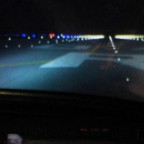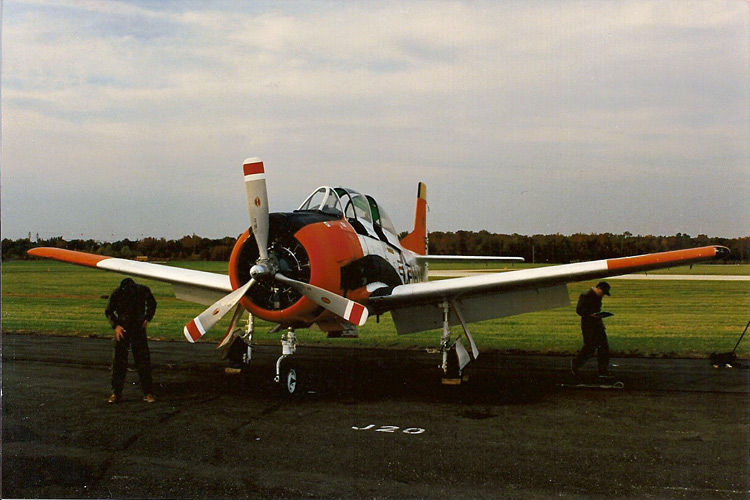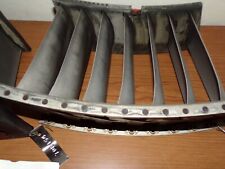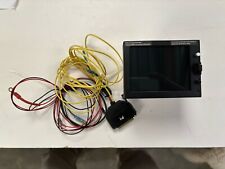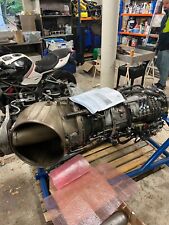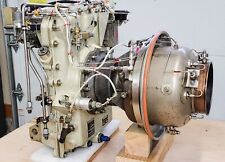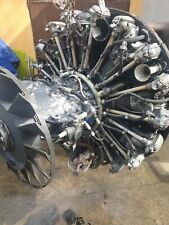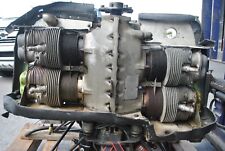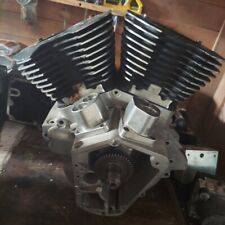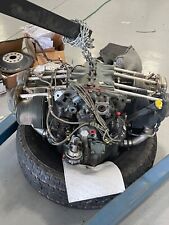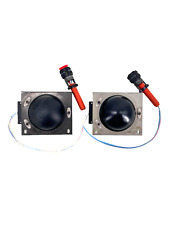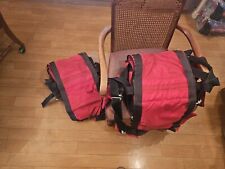The instructor station not only allows them to set the simulator conditions, but it also allows them to monitor performance by providing real-time data and plots of the maneuvers or approaches being flown. Using real-time output the sim instructor can offer advice and suggestions on how to improve performance or highlight an area where a different technique might benefit the student. The interesting thing about being an instructor is that you have to be a Jack of All Trades and Master of All since the instructor is doing a lot of multi-tasking while instructing. In addition to running the sim, the instructor has to actively instruct, monitor, play air traffic controller, and record and document notes for the debrief. Being a good sim instructor is definitely a talent and I’ve seen good ones and bad ones.
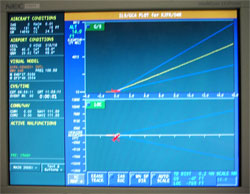 |
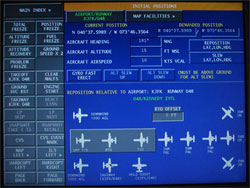 |
Once the maneuvers or approaches are flown, the instructor has the option of outputting flight data to hard copies which is useful when reviewing the sim session during the subsequent debriefing. Some of my best and worst moments have been captured over the years on these printouts! Here are two of my printouts from this session; the first is a plot of the steep turns airwork and the second is my entry and full turn in an NDB hold at White Plains.
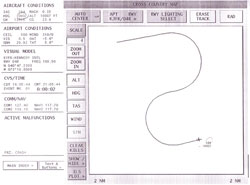 |
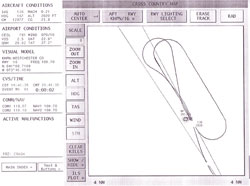 |
When the door closes on the simulator and the motion comes on, the suspension of disbelief is very powerful. While not a perfect replica of actual flight, a full motion simulator does a very good job of imparting the feeling of flight. I think part of the reason it is so effective is that at no time in the simulator are you really free to let your mind wander to the mechanics of why you are experiencing the feelings you are feeling; you are much too busy for that.
The simulator tricks your kinesthetic senses by using ingenious methods of moving the box around. Takeoff acceleration, for instance, is modeled by gently tipping the simulator backwards, which gives you the sensation of being pushed back in your seat. Likewise, deceleration is accomplished by tilting the simulator forward slightly. The simulator is very good at replicating the maneuvers normal to everyday flying and only starts to diverge once you introduce more extreme maneuvers such as steep bank angles or any maneuver that would normally exert significant G-forces on the aircraft. Turbulence and wind-shear are very well done in the simulator and the bumping and shaking can really increase your workload.
An interesting fact is that all of the equipment in the simulator is the actual equipment you would normally have in your own aircraft. The cockpits aren’t mock-ups, they are real and working cockpits that contain the exact same instruments, gauges, and switches that the real airplane contains. You could take the instruments out of the simulator and install them in the real airplane; they aren’t fabricated or fake at all. The use of the real equipment adds to the sense of realism and makes the transition from the real cockpit to the simulator cockpit a seamless affair.
There are some very small variations and limitations within the sim that remind you that you aren’t in the real aircraft. The most noticeable difference (to me) in the simulator is the difference in ground handling. The simulator doesn’t taxi quite as smoothly as the real thing and executing maneuvers such as tight 180 degree turns can be an exercise in jerkiness and slight nausea as the visuals trick your mind into feeling something your body doesn’t agree with. Indeed, some people can get quite sick in the simulator because of the interaction between the visuals and the motion that the body can perceive as being not quite 100% right. The instructors have the capability of “warping” you to whatever location or situation they want while you are in the sim and it can be quite disconcerting and disorienting to be at 250 knots and 25,000 feet one second and then be stationary on the runway the next second. For this reason the instructors use the “reposition” function cautiously and, prior to using it, advise the pilots to avert their eyes from the view out of the windscreen.
The Citation V simulator has fairly good visual representations of flight. In particular the night environments are very well done and believable. The available areas for flying are constrained to what has been programmed for the simulator, which is rather limited. Sim training isn’t about flying around VFR enjoying the sights ala FS9; it is about procedures, so the sim is more utilitarian than entertainment. That said, the daytime VFR depiction of the area around Aspen, Colorado is quite well done. The second day in the sim is referred to as the “high & hot” day since we spend our time in the mountains of Colorado with high temperatures, high gross weights, and high density altitudes. All of these factors combine to make Day 2 an exciting day in the simulator. At such high temperatures and density altitudes, the airplane performance is severely handicapped. An engine failure at V1 is a handful and milking the best performance from the aircraft while avoiding the terrain becomes an exercise in energy management.

